| November 25, 2014 | Volume 10 Issue 44 |
|
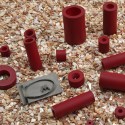 | Molded Nylon Special Standard Round Spacers
Micro Plastics announces a new product line of Special Standard Round Spacers. The new line of molded nylon round spacers includes over 250 sizes, with diameters of 1/8" through 1 1/2" and lengths from 1/8" to 2 3/4". These tough, resilient spacers can be used in a variety of assemblies. Useful in electronic and electrical applications, they may also be used as bushings, bearings, rollers, gliders, and bumpers. They are resistant to vibration, abrasion, and corrosion; are electrically insulating; and have a high strength-to-weight ratio.
Click here to learn more. |
| | Feature articles |
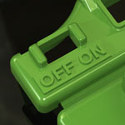 | Guidelines for designing text on plastic parts
There are lots of reasons to add text to a part. It could be an assembly instruction, a part number, a legally advisable warning, or simply a logo. Whatever the reason, text characters tend to be the smallest features of a part and, as such, deserve the designer's careful attention. Gus Breiland, Customer Service Engineering Manager, Proto Labs, runs through some simple guidelines.
Read the full article. |
|
 | Bluetooth and ZigBee: A new standards war brewing?
The recent announcement of Bluetooth Mesh is yet another attempt of Bluetooth to get into the networking space. Over 15 years ago, Bluetooth tried to oust WiFi as a networking standard. That attempt failed miserably, as WiFi has become the de-facto wireless networking standard in homes, buildings, and public spaces worldwide. Now Bluetooth is giving it another try.
Read the full article. |
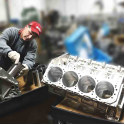 | Wheels:
Mastering engine block 'peaks and valleys'
Dick Maskin started Dart Machinery in 1981 in a two-car garage in Oak Park, a Detroit suburb, and has grown it into a manufacturing leader in racing and high-performance engine blocks, heads, and other components. The company turns out about 8,000 blocks and 16,000 heads a year for drag racing, circle track racing, road racing, high-performance custom cars and more. Maskin says that advanced honing provides a key differentiator for maintaining a competitive advantage in processing an ever-changing mix of blocks.
Read the full article. |
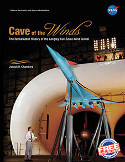 | Mike Likes:
Cave of the Winds - The remarkable history of the Langley full-scale wind tunnel
After you've had your fill of turkey leftovers and Black Friday shopping, why not savor a little "me" time? "Cave of the Winds" is the latest no-cost ebook from NASA. In 500+ pages, it profiles the huge Langley Full-Scale Tunnel building (1930-2011) that was constructed during an era when biplanes and dirigibles dominated aviation. The results of critical tests conducted within its massive test section contributed to many of the nation's most important aeronautics and space programs. Lots of other ebook options to choose from.
Check out NASA's latest ebooks. |
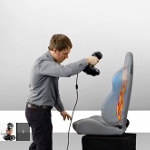 | Cool Tools: Creaform GO!SCAN 3D scanner
Creaform's Go!SCAN 3D is a simple, portable, and affordable 3D scanner that lets engineering users effortlessly capture the 3D shape of any object, including complex, freeform, and organic shapes. This is a really slick tool that lets you scan using a super-easy spray-paint style for accurate reverse-engineering or prototyping models. Dynamic referencing makes it possible to move the part during scanning, all while keeping the accuracy level up to 0.1 mm.
View the video. |
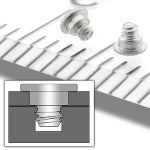 | Product: Microfasteners for compact electronics and more
The hardened stainless steel microPEM TackScrew fasteners from PennEngineering integrate proven self-clinching technology for permanent sheet-to-sheet attachment while also incorporating a unique thread-like feature to allow fastener removal when necessary. This combination adds functionality to the original microPEM TackPin fastener product line for thin-sheet attachment applications, especially compact electronics. TackScrew fasteners (Type TS) can even be reinstalled one time if desired.
Click here to learn more. |
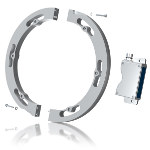 | Product: Segmented encoder for big machines
The Leine & Linde MRI 2000 rotary encoder is designed to provide feedback solutions for large rotating machinery typically found in the construction, pulp and paper, oil and gas, wind, and marine industries. This encoder has received significant performance upgrades since its introduction two years ago. The MRI ring encoder is segmented into pieces to facilitate simple commissioning and service, and it is now available with an alternative magnetic structure, enabling relaxed tolerances for the sensor pickup mounting. Radial gap tolerances have been doubled, allowing up to 6 mm between the sensing head and the ring surface. In addition, frequency response of the pickup has been doubled as well, providing the opportunity for higher shaft speeds. Exclusive North American distribution through HEIDENHAIN Corporation in Schaumburg, IL.
Click here to learn more. |
 |
| | Most popular last issue |
 | Wings:
LabVIEW and NI CompactDAQ get the Skylon space plane project off the ground
Current space propulsion systems based on rocket technology alone place limits on the performance of launch vehicles, which leads to multistage vehicle configurations that are either expendable or only partly reusable. This results in complex launch systems that are both high maintenance and expensive to operate. REL's Skylon space plane, a fully reusable single-stage launch vehicle, addresses these drawbacks and could revolutionize future access to space by providing more efficient and reliable launch operations. Michael Hood of Reaction Engines Ltd. talks about developing and testing the Skylon Mach 25 engines.
Read the full article. |
|
| | Videos+: Technologies and inspiration in action | ABB unveils YuMi human-robot collaboration solution
ABB's YuMi (short for "you and me") human-friendly dual-arm robot has the ability to feel and see. It performs with accuracy so great it can thread a needle and is perfect for small parts assembly, where people and robots work hand in hand on the same tasks. The robot's soft, padded dual arms, combined with innovative force-sensing technology, ensure the safety of YuMi's human co-workers while the unit works cage-free.
View the video to see YuMi in action. |
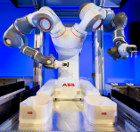 |
Can you get more out of a cheap motor?
When buying expensive motors, you typically pay for a more optimized design, higher quality materials, and higher quality manufacturing. Researchers at the University of Pennsylvania's MODLAB claim that you can compensate for the usual shortcomings of a cheap motor by mapping the motor's torque ripple and feeding in the inverse of this map to the motor's produced torque via software, making an anticogged motor. The torque ripple ratio is significantly decreased for the motor, and a cheap motor can now perform as good as an expensive one. What do you think? For the time being, we are sticking with, "You get what you pay for."
View the video. |
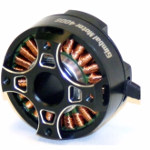 |
|
|